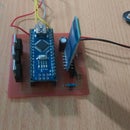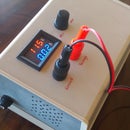Introduction: Design Your Own Development Board
Note: This tutorial includes free information designing development board, not free schematic or etc.
In this tutorial, I will give information about how can you design your own development board and what are the important tips and steps. Before starting design you should know 2 important subjects:
- Kirchhoff current and voltage law
- Low and high pass filters
Step 1: Choosing Microcontroller
For my own board, I chose STM32 microcontroller, which is ARM-based. You should choose the MCU upon your request. If you are a beginner you can choose Atmega 328p which is use in Arduino.
- Firstly decide which features you need. How many I/O, USART, SPI etc. need
- Read datasheet and learn features your own MCU
You can use every detail in a datasheet. For example: How to choose crystal oscillator and capacitors. In the electrical characteristic part, you can see every detail and how you can choose it.
Step 2: Power Part
The second important part is the design power part. Open electrical characteristic part and find absolute maximum ratings and learn nominal Vdd voltage. My MCU nominal voltage is 3.3v. Therefore I need two power parts. Firstly For input, I need a 5V voltage regulator and it will continue with the 3.3 voltage regulator. Define your requirements and choose the voltage regulator(LDO) and examine datasheet(operating voltages and power ratings). End of the datasheet you will find typical applications and you can use those examples for your board.
Step 3: UART Bridge
Our MCU communicates with the computer(compiler). Therefore we need UART Bridge for this reason. You can find all details about UART in the link.
There is a couple of integrated circuits for UART bridges and these are FTDI, CP2102-9 and CH340.In my project, I used FTDI-232RL because it is faster than other chips and more compatible Windows or Mac but is expensive. In datasheet has example circuits. My MCU use 3.3 voltage level. Therefore I used the convinient example. Be careful about that, otherwise, you can give damage to your MCU.
Step 4: Designing PCB
I used EAGLE PCB for this project. You can use any of the CAD programmes. After design your circuit. You should check DRC and ERC errors. Be sure everything is correct. When designing firstly check components availability you can find easily or not. After that use that component in the program. If you are not so able to soldering you can use try to choose bigger components' case. For example, you should choose the 1206 case resistor, not 805 or 603 cases.
First, read the manufactures capabilities link. Then set design rules your programme before you start design PCB. Signal width must be calculated because more current means that more width signal ways.
Step 5: Soldering
For soldering, you have many options. You can order your manufacturer to assemble your components or you can buy a stencil or you can solder with iron solder. Methods are up to you. I soldered my components with iron solder and I used 900m-2c iron tip. You should check the datasheet for soldering temperature and solder your components. Otherwise, you can give damage to your components. Use high-quality solder wire and after and before soldering you should clean your PCB using alcohol.











